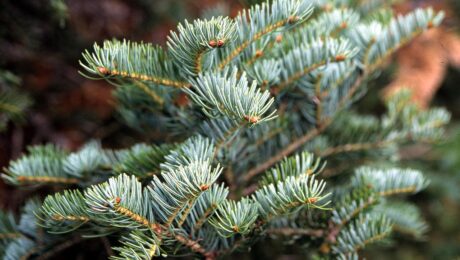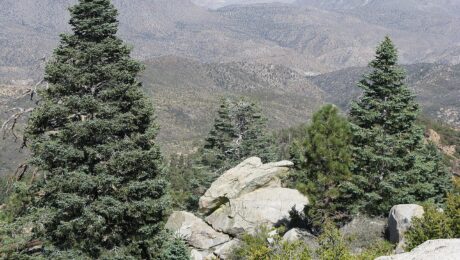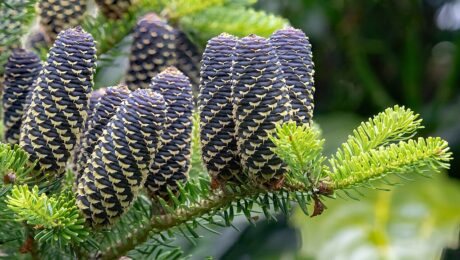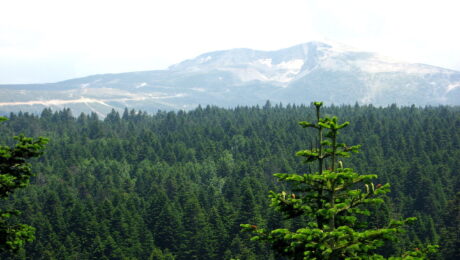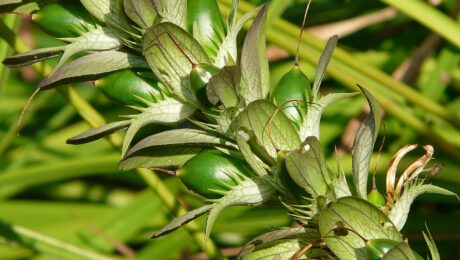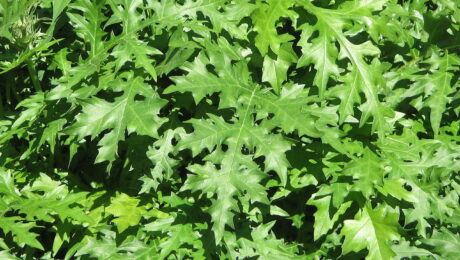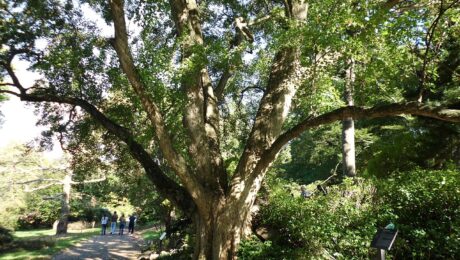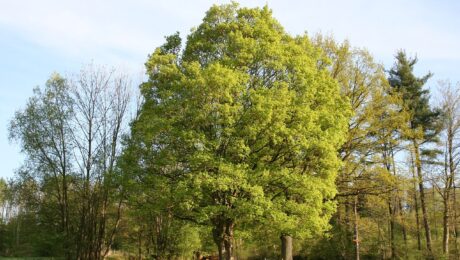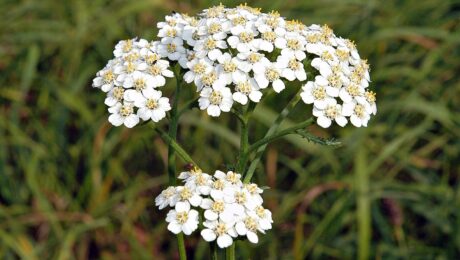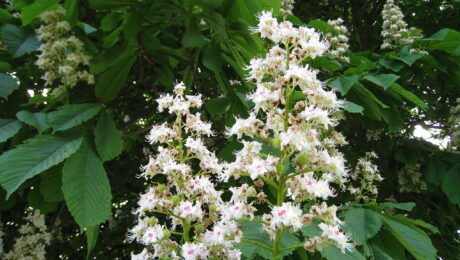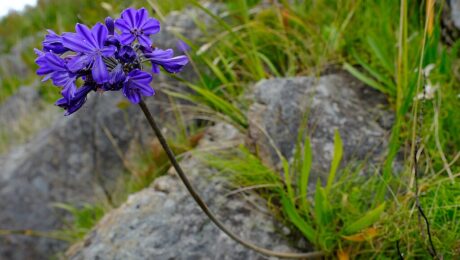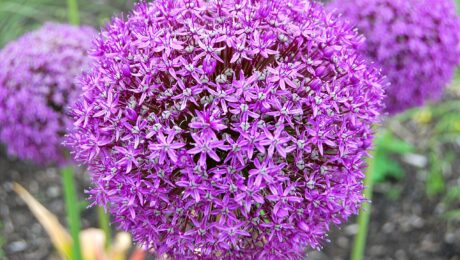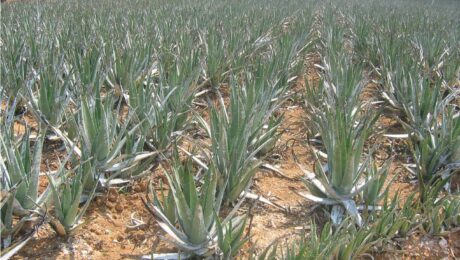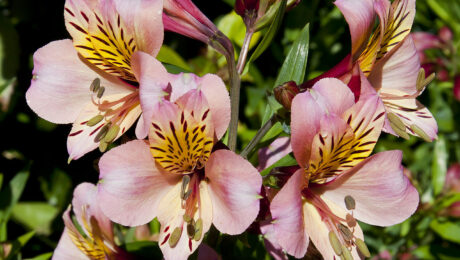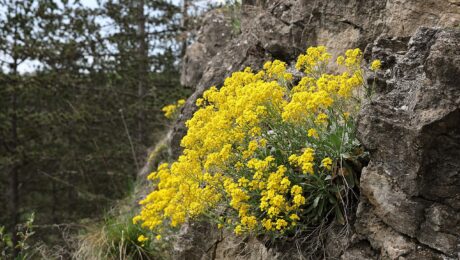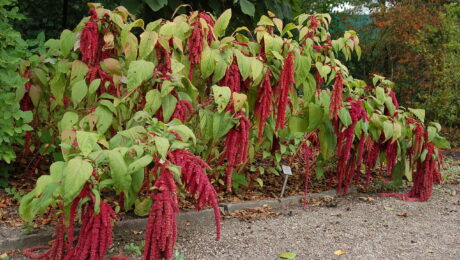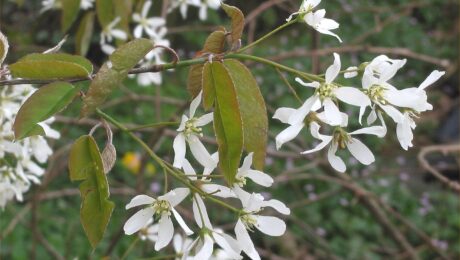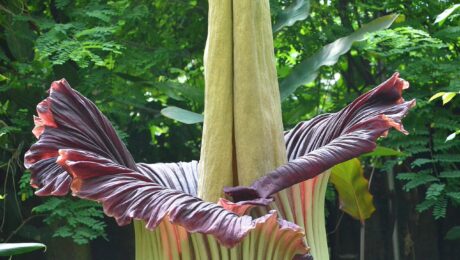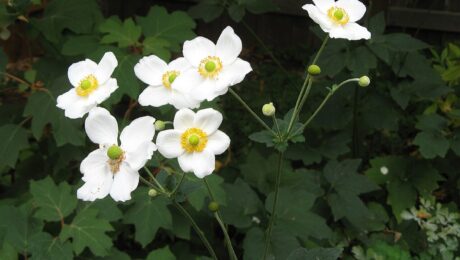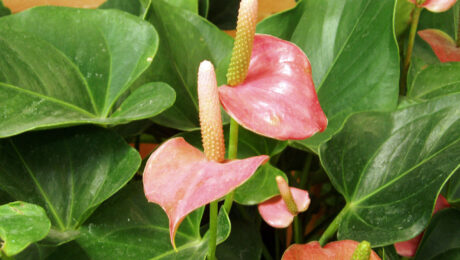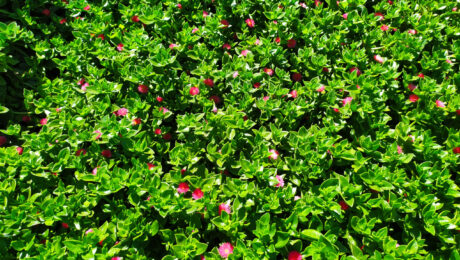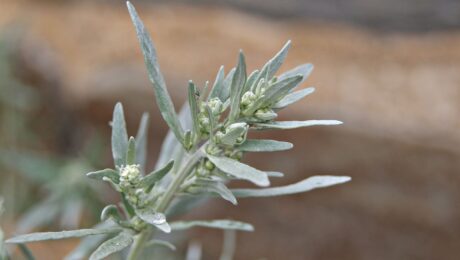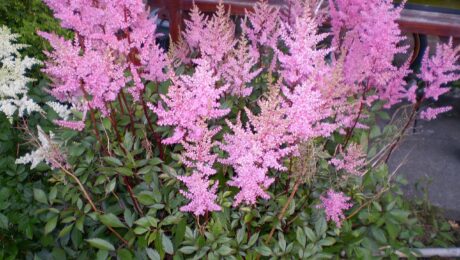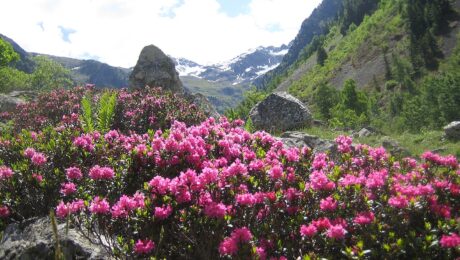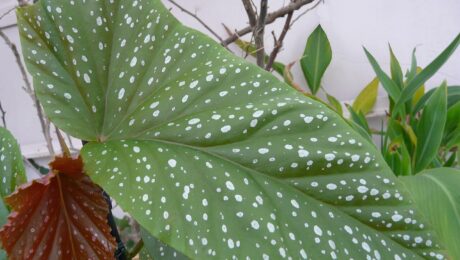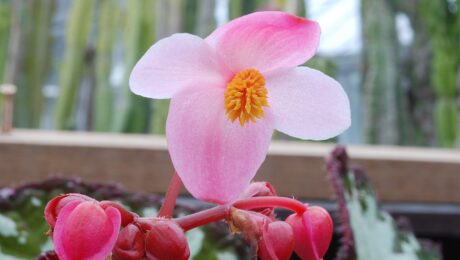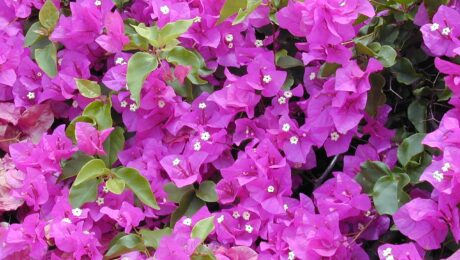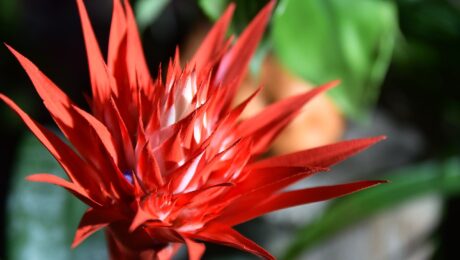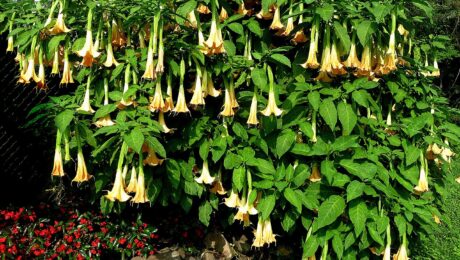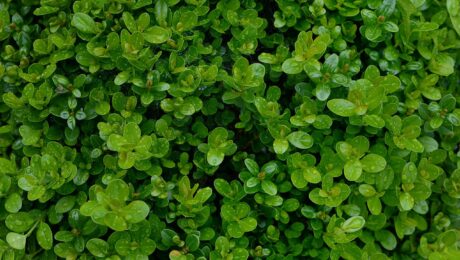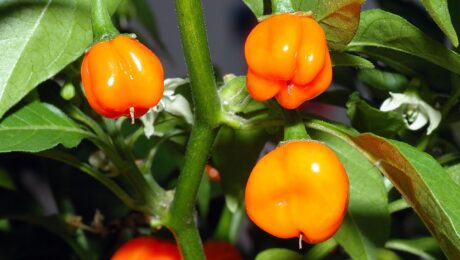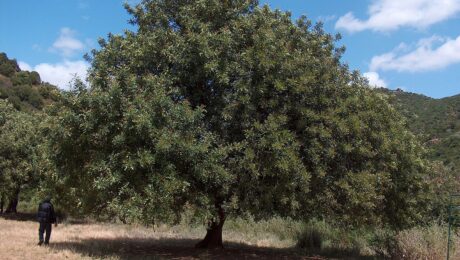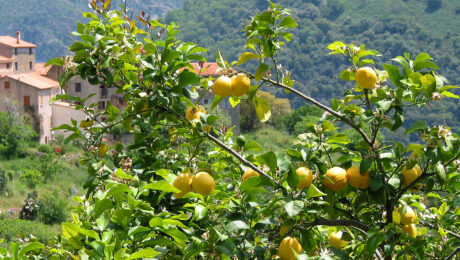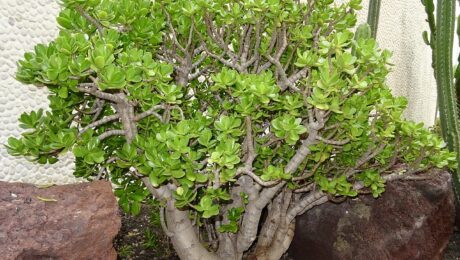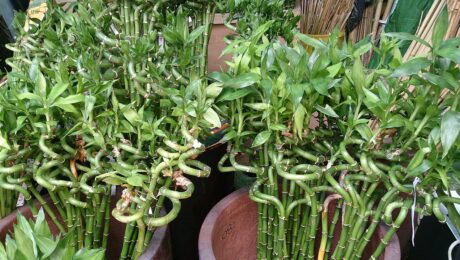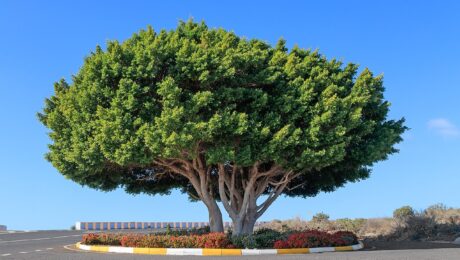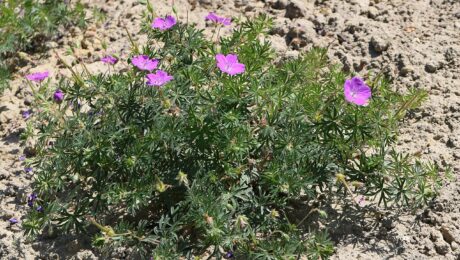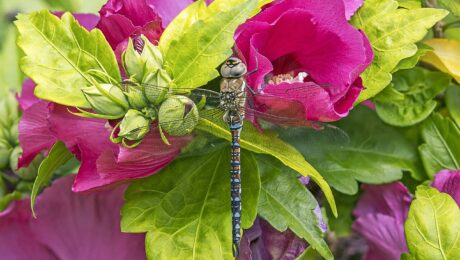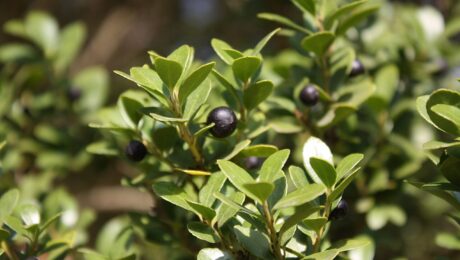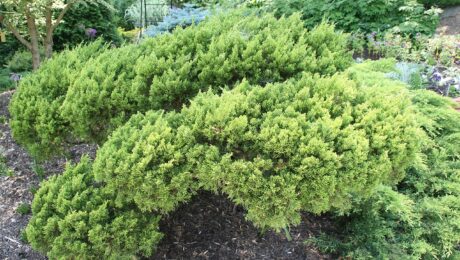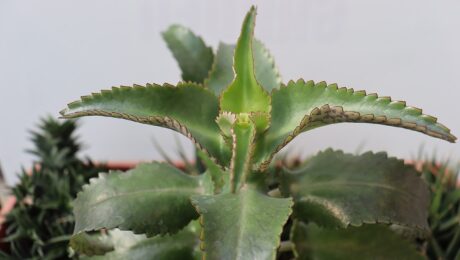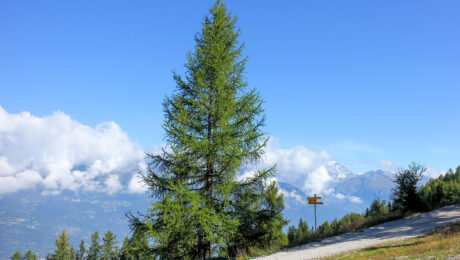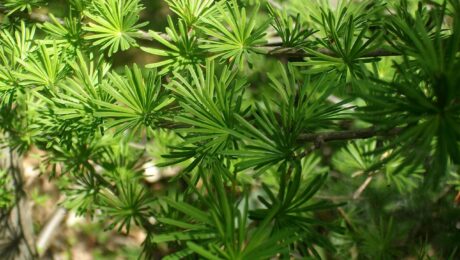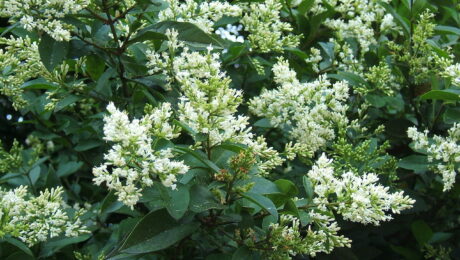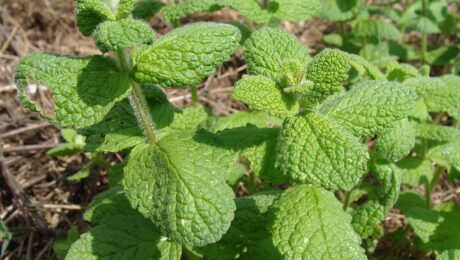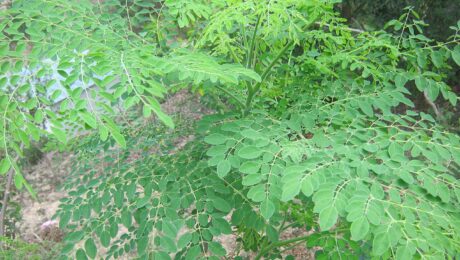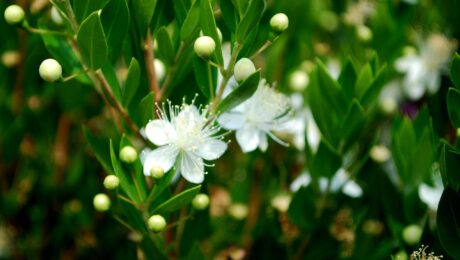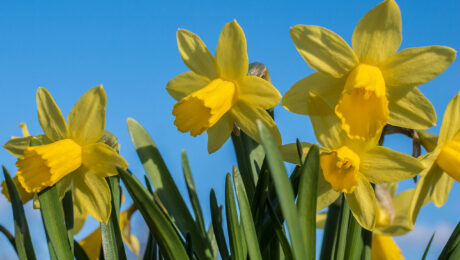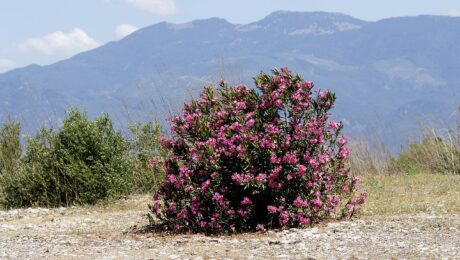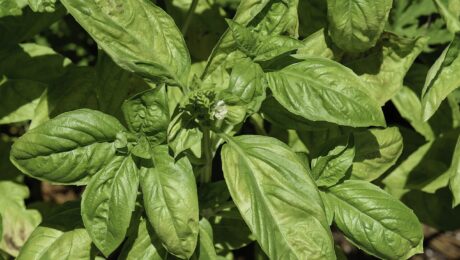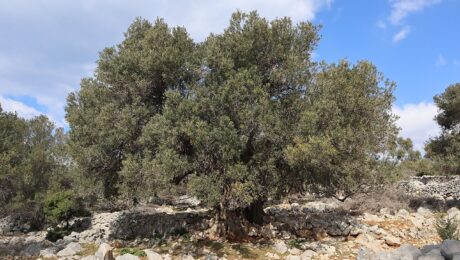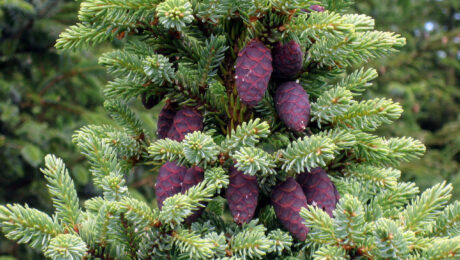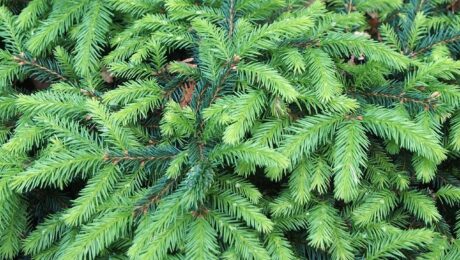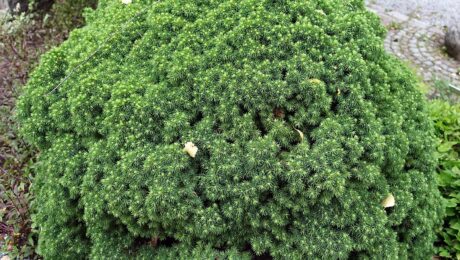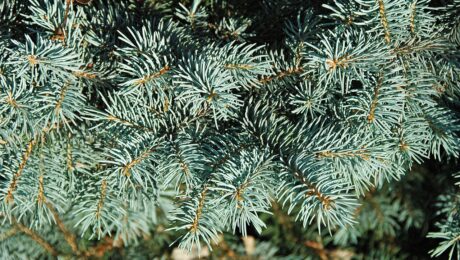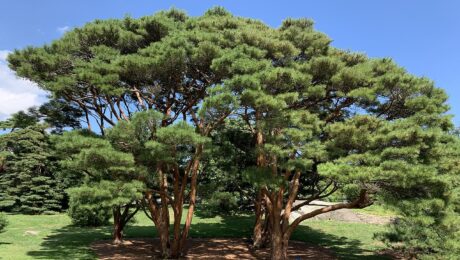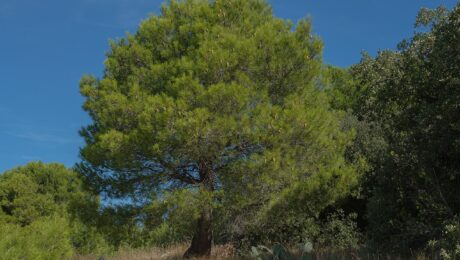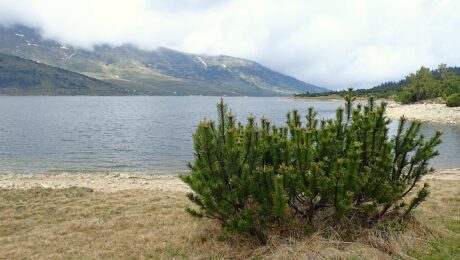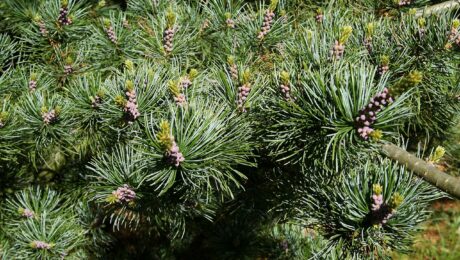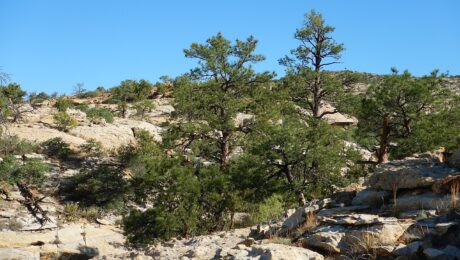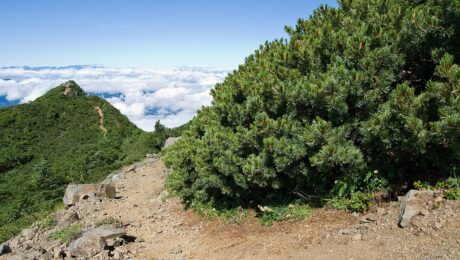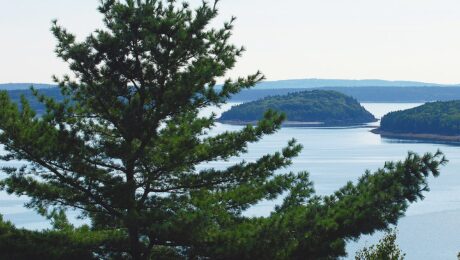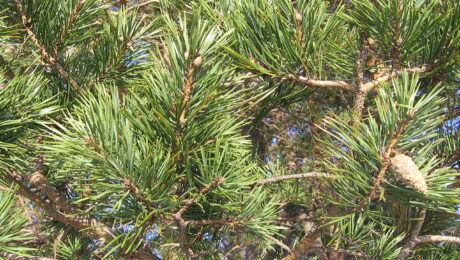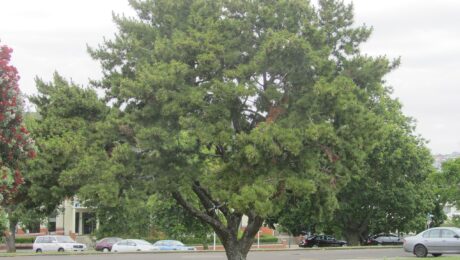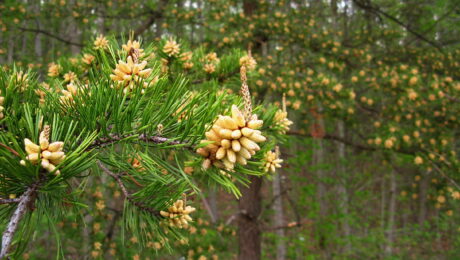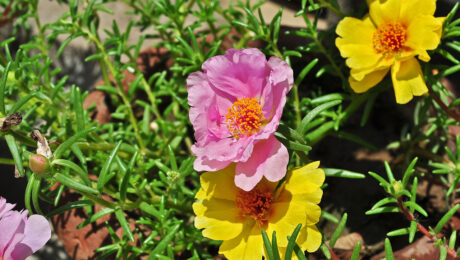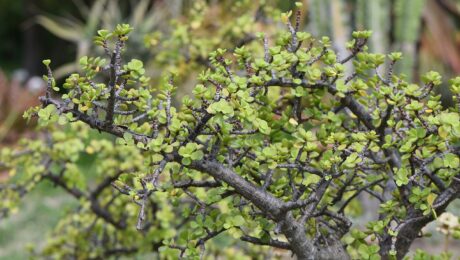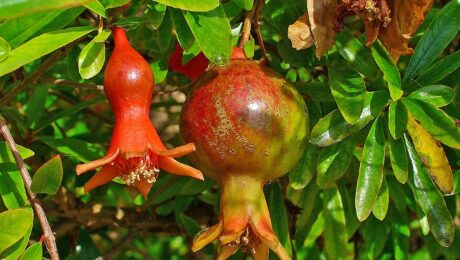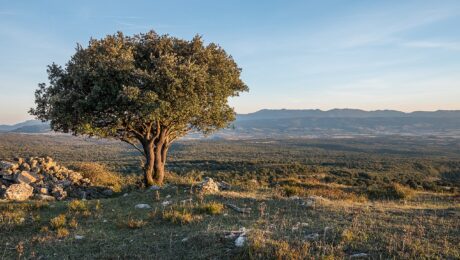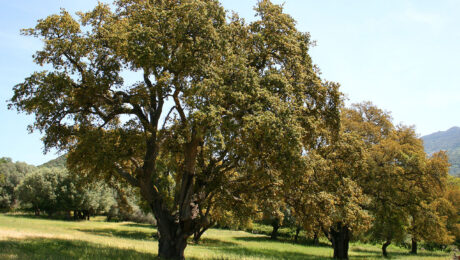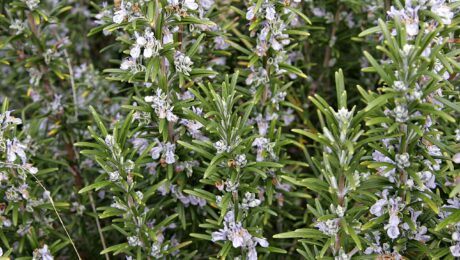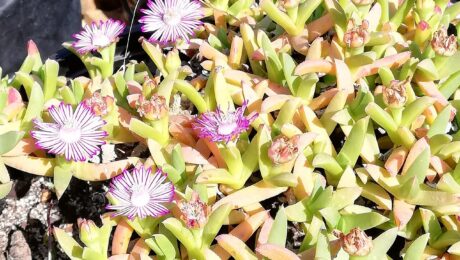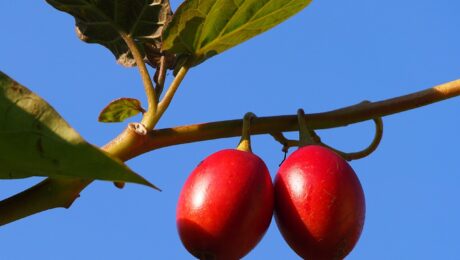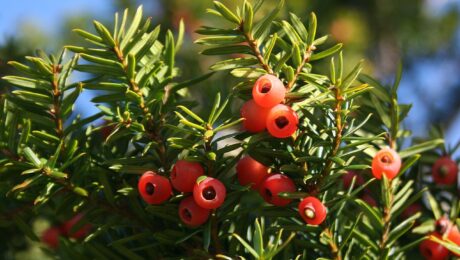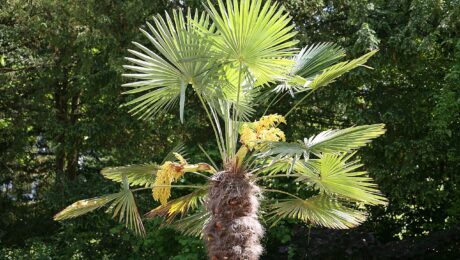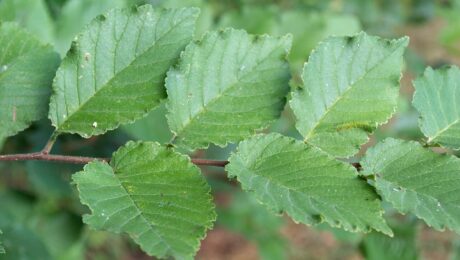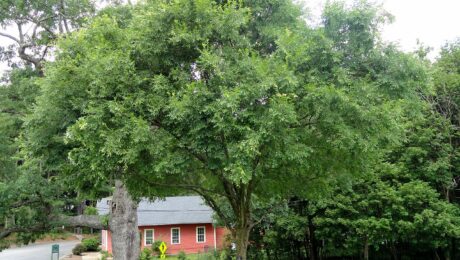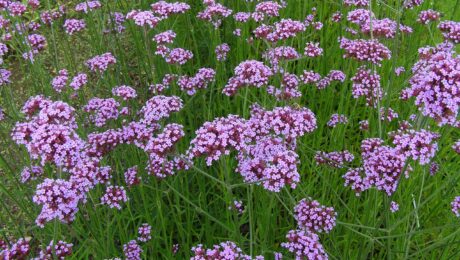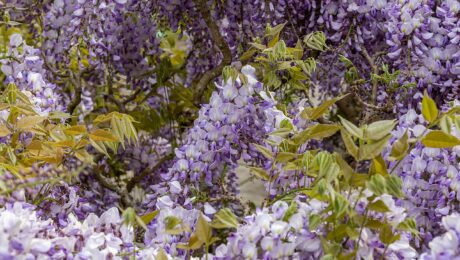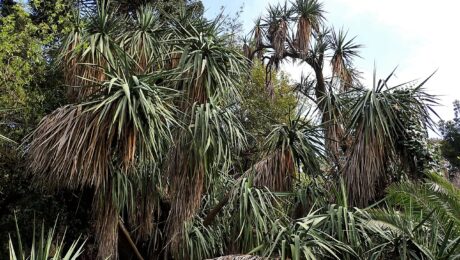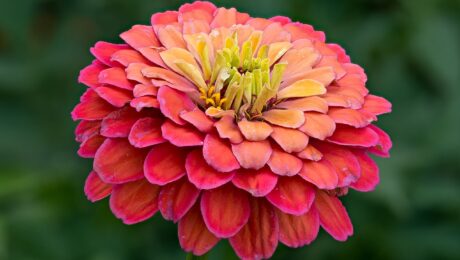Abies alba, commonly known as European Silver Fir, is a tall, stately evergreen conifer native to the mountainous regions of central and southern Europe. This tree is characterized by its straight, pyramidal shape and its smooth, greyish bark which becomes rough and furrowed with age. The needles are dark green on top with two silver-white
Abies concolor, commonly known as White Fir or Concolor Fir, is a large evergreen conifer native to the mountains of the western United States and northern Mexico. This tree is appreciated for its graceful, symmetrical form, soft blue-green to silvery needles, and pleasant citrus-like scent. The needles are long, flat, and slightly curved, giving the
Abies koreana, commonly known as Korean Fir, is a small to medium-sized evergreen conifer native to the mountains of South Korea. It is highly valued for its compact, pyramidal shape and its attractive, dense foliage. The needles are dark green with a striking silver-white underside, creating a beautiful contrast. One of the most distinctive features
Abies nordmanniana, commonly known as Nordmann Fir, is a majestic evergreen conifer native to the mountains of Turkey and the Caucasus. It is prized for its symmetrical, conical shape, dense foliage, and its ability to retain its needles for a long time, making it a popular choice for Christmas trees. The needles are dark green
Abies pinsapo, commonly known as Spanish Fir, is an evergreen conifer native to the mountains of southern Spain and northern Morocco. It is prized for its symmetrical, pyramidal shape and its striking, stiff, dark green to bluish-green needles that radiate around the branches. The tree produces attractive, upright cones that turn from green to brown
Acanthus mollis, commonly known as Bear’s Breeches, is a perennial plant native to the Mediterranean region. It is admired for its bold, architectural foliage and striking flower spikes. The leaves are large, deeply lobed, and glossy green, forming a dense rosette. In late spring to summer, it produces tall spikes of hooded, white to pinkish
Acanthus spinosus, commonly known as Spiny Bear’s Breeches, is a perennial herbaceous plant native to the Mediterranean region. It is admired for its deeply lobed, glossy dark green leaves, which have spiny edges, and its tall, architectural flower spikes. The flower spikes bear hooded, white to pinkish flowers with purple bracts and can reach up
Acer buergerianum, commonly known as Trident Maple, is a small to medium-sized deciduous tree native to China, Taiwan, and Japan. It is cherished for its attractive, three-lobed leaves and vibrant fall colors, which range from yellow to red and orange. The leaves are glossy green during the growing season and have a distinctive trident shape.
Acer campestre, commonly known as Field Maple, is a deciduous tree native to Europe and western Asia. It is well-regarded for its adaptability, attractive foliage, and versatile use in landscaping. Field Maple features small, five-lobed leaves that are dark green in summer and turn a striking yellow or red in the autumn. The tree has
Acer palmatum, commonly known as Japanese Maple, is a deciduous tree native to Japan, China, and Korea. It is admired for its graceful, delicate leaves, which are deeply lobed and come in a variety of colors, including green, red, orange, and purple. The tree’s aesthetic appeal is further enhanced by its attractive bark and elegant
Acer platanoides, commonly known as Norway Maple, is a large deciduous tree native to Europe and western Asia. It has been widely planted in North America and other parts of the world as an ornamental and shade tree due to its adaptability and robust growth. Norway Maple is characterized by its broad, dense canopy, making
Achillea millefolium, commonly known as Common Yarrow, is a hardy perennial plant native to temperate regions of the Northern Hemisphere. It is valued for its finely divided, fern-like foliage and clusters of small, flat-topped flowers that bloom in various colors, including white, yellow, pink, and red. Yarrow is well-known for its medicinal properties and its
Aesculus hippocastanum, commonly known as Horse Chestnut, is a large deciduous tree native to the Balkan Peninsula but widely cultivated throughout Europe and North America. It is renowned for its broad, palmate leaves and its large, showy clusters of white to pinkish flowers, which bloom in spring. These flowers give way to spiny green seed
Agapanthus africanus, known as the African Lily or Lily of the Nile, is a perennial flowering plant native to South Africa. It is renowned for its striking blue or white flowers that bloom in spherical clusters on tall stalks above lush, strap-like leaves. Preferred Growing Conditions: Soil Type: Well-drained, fertile soil; tolerates a range of
Agave americana, commonly known as the Century Plant, is a striking and robust succulent native to Mexico. It is renowned for its large, rosette-forming leaves that are blue-green, thick, and fleshy with sharp spines along the edges. Each leaf can grow up to 6 feet (1.8 meters) long, making the entire plant an impressive architectural
Allium giganteum, commonly known as Giant Allium or Giant Onion, is a striking perennial plant in the Amaryllidaceae family. Native to Central and Southwestern Asia, it is renowned for its tall, sturdy stems topped with large, spherical clusters of tiny, star-shaped purple flowers. These globular flower heads can reach up to 6 inches (15 cm)
Alocasia macrorrhizos, commonly known as Giant Taro or Elephant Ear, is a striking perennial plant native to Southeast Asia. It is well-known for its large, heart-shaped leaves that can grow up to 3 feet (1 meter) long, creating a dramatic, tropical appearance. The leaves are thick, glossy, and dark green with prominent veins. This plant
Aloe vera, commonly known as Aloe, is a succulent plant species native to the Arabian Peninsula but now cultivated worldwide for its medicinal properties and ornamental value. It features thick, fleshy, green to grey-green leaves that form a rosette. The leaves have serrated edges and are filled with a clear gel known for its soothing
Alstroemeria aurea, commonly known as the Peruvian Lily or Lily of the Incas, is a perennial plant native to South America. It is cherished for its striking, funnel-shaped flowers which come in vibrant hues of orange, yellow, pink, red, and even bi-colors, often adorned with intricate streaks and spots. The flowers are borne on long,
Alyssum saxatile, commonly known as Basket-of-Gold or Gold Dust, is a perennial plant native to Europe and parts of Asia. It is renowned for its bright yellow, small, clustered flowers that create a stunning golden carpet in spring. The plant forms low-growing mounds of grey-green, lance-shaped leaves, providing a lovely contrast to the vibrant blooms.
Amaranthus caudatus, commonly known as Love-Lies-Bleeding, is an annual flowering plant native to South America. It is celebrated for its dramatic, cascading tassels of deep red or purple flowers that hang gracefully from tall, upright stems. The plant also has broad, green to reddish leaves, adding to its ornamental appeal. Love-Lies-Bleeding is often used in
Amaryllis belladonna, commonly known as the Belladonna Lily or Naked Lady, is a perennial bulbous plant native to South Africa. It is renowned for its striking, trumpet-shaped pink flowers that appear on tall, leafless stalks in late summer to early autumn. The leaves emerge after the flowers fade, hence the nickname “Naked Lady” because the
Amelanchier canadensis, commonly known as Canadian Serviceberry, is a deciduous shrub or small tree native to eastern North America. It is valued for its multi-seasonal interest: white, showy flowers in early spring, followed by edible berries in summer, and vibrant fall foliage. The berries, which are sweet and juicy, are popular with both wildlife and
Amorphophallus titanum, commonly known as Titan Arum or the Corpse Flower, is a unique and fascinating plant native to the rainforests of Sumatra, Indonesia. It is famous for producing the largest unbranched inflorescence in the plant kingdom and its distinctive odor, which resembles rotting flesh. The massive flower structure consists of a central spadix surrounded
Anemone hupehensis, commonly known as Japanese Anemone or Chinese Anemone, is a herbaceous perennial native to China and naturalized in Japan. It is prized for its elegant, long-blooming flowers that appear in late summer to autumn, adding vibrant color to the garden when many other plants are starting to fade. The flowers, which can be
Anthurium andraeanum, commonly known as Flamingo Flower or Laceleaf, is a striking tropical perennial native to Colombia and Ecuador. It is highly valued for its glossy, heart-shaped leaves and vibrant, long-lasting spathes, which can be red, pink, white, or even green. The spathes are often mistaken for flowers but are actually modified leaves that surround
Aptenia cordifolia (Baby Sun Rose) Propagation Methods This comprehensive guide aims to equip you with the knowledge to propagate and nurture Aptenia cordifolia, ensuring that these delightful plants thrive and bring joy to your gardening endeavors. Introduction Aptenia cordifolia, commonly known as the Heartleaf Ice Plant or Baby Sun Rose, is a succulent perennial cherished
Aquilegia vulgaris, commonly known as Common Columbine, is a perennial plant native to Europe. It is cherished for its unique, nodding flowers that come in a wide range of colors including blue, purple, pink, red, white, and yellow. The flowers have distinctive, backward-pointing spurs and are often bi-colored. The foliage is delicate and fern-like, adding
Arisaema triphyllum, commonly known as Jack in the Pulpit, is a unique and striking perennial plant native to North America. It is known for its distinctive flower structure, which features a hooded spathe (the “pulpit”) and a central spadix (the “Jack”) that is often covered in tiny flowers. The spathe is typically green with purple
Artemisia absinthium, commonly known as Wormwood, is a perennial herbaceous plant native to temperate regions of Europe, Asia, and North Africa. It is known for its aromatic, silvery-grey foliage and its use in traditional medicine and as a flavoring in the production of absinthe and vermouth. Wormwood grows in a bushy, upright form and can
Asclepias tuberosa, commonly known as Butterfly Weed, is a perennial herbaceous plant native to North America. It is famous for its vibrant clusters of orange, yellow, or red flowers that attract a variety of pollinators, especially butterflies, hence its common name. The plant’s narrow, lance-shaped leaves and upright growth habit make it a striking addition
Astilbe japonica, commonly known as Japanese Astilbe, is a perennial plant native to Japan and East Asia. It is prized for its beautiful, feathery plumes of flowers that come in shades of pink, white, red, and lavender, blooming in late spring to early summer. The plant’s finely divided, fern-like foliage adds texture and interest to
Azalea is a popular genus within the Rhododendron family, comprising numerous species and hybrids known for their spectacular spring blooms. These deciduous or evergreen shrubs are prized for their vibrant, funnel-shaped flowers that come in a wide range of colors, including pink, red, purple, white, and yellow. Azaleas are native to Asia, Europe, and North
Bamboo is a diverse group of fast-growing, woody, perennial plants in the Poaceae family, native to Asia, Africa, and the Americas. Known for their hollow, segmented stems and rapid growth, Bamboos are often used in landscaping, construction, and as ornamental plants. Depending on the species, Bamboos can range from small groundcover plants to towering giants
Begonia maculata, commonly known as Polka Dot Begonia or Spotted Begonia, is a strikingly beautiful perennial plant native to the tropical rainforests of Brazil. It is highly prized for its unique foliage, featuring large, wing-shaped leaves adorned with silver-white polka dots on the upper surface and deep red to purple undersides. The leaves are often
Begonia rex, commonly known as Rex Begonia or Painted-Leaf Begonia, is a stunning perennial plant famed for its striking, variegated foliage rather than its flowers. Native to the rainforests of India, Rex Begonia displays a remarkable variety of leaf patterns and colors, including shades of green, silver, red, purple, and pink. The leaves are typically
Begonia semperflorens, commonly known as Wax Begonia, is a popular annual or perennial flowering plant known for its vibrant blooms and glossy, waxy leaves. Native to Brazil, Wax Begonia is widely grown in gardens and as a houseplant due to its continuous flowering and ease of care. The flowers come in a range of colors
Bougainvillea is a genus of flowering plants native to South America, particularly Brazil, Peru, and Argentina. These plants are celebrated for their vibrant and colorful bracts, which are often mistaken for flowers. The actual flowers are small and typically white or yellow, surrounded by the papery bracts that can be pink, magenta, purple, red, orange,
Bromeliads are a diverse family of tropical plants known for their unique rosette-shaped foliage and striking flowers. Native to the Americas, Bromeliads come in a wide range of sizes, shapes, and colors, making them a popular choice for indoor and outdoor cultivation. The foliage varies from thick, leathery leaves to soft, arching ones, often displaying
Brugmansia, commonly known as Angel’s Trumpet, is a genus of flowering plants in the Solanaceae family, native to South America. These plants are famous for their large, trumpet-shaped flowers that hang down gracefully, emitting a sweet fragrance, especially in the evening. The flowers can be white, yellow, pink, or orange, and are known for their
Buxus sempervirens, commonly known as Common Boxwood, is a versatile evergreen shrub native to Europe, northern Africa, and western Asia. It is highly valued for its dense, compact foliage and its ability to be shaped into topiaries, hedges, and formal garden structures. The leaves are small, oval, and glossy green, with a subtle fragrance when
Capsicum chinense ‘Habanero’ (Habanero pepper) Propagation Methods This guide aims to provide comprehensive knowledge for propagating and caring for Habanero peppers, ensuring that you can cultivate and enjoy these fiery gems in your garden. Introduction Capsicum chinense, commonly known as the Habanero pepper, is renowned for its fiery heat and distinctive fruity flavor. Originating from
Cedrus atlantica, commonly known as Atlas Cedar, is a majestic evergreen conifer native to the Atlas Mountains of Morocco and Algeria. This tree is admired for its stately form, beautiful blue-green needles, and its adaptability to various climates. The foliage is dense and needle-like, with clusters of short, curved needles that give the tree a
Ceratonia siliqua, commonly known as the Carob Tree, is a long-lived, evergreen species native to the Mediterranean region. It is prized for its edible pods, which are often used as a chocolate substitute, and its ability to thrive in arid conditions. Carob trees are highly adaptable and can be cultivated for ornamental purposes, for their
Citrus limon (Lemon tree) Propagation Methods This guide provides a comprehensive approach to propagating and nurturing lemon trees, equipping you with the skills and knowledge to cultivate these delightful plants and enjoy their vibrant fruits and flowers. Introduction Citrus limon, commonly known as the lemon tree, is a beloved fruit tree cherished for its bright,
Crassula ovata, commonly known as Jade Plant, Money Plant, or Friendship Tree, is a popular succulent native to South Africa and Mozambique. Known for its thick, glossy, green leaves and woody stems, this plant is a favorite among indoor gardeners and bonsai enthusiasts. It is admired not only for its aesthetic appeal but also for
Dracaena sanderiana, commonly known as Lucky Bamboo, is a popular houseplant that is native to the tropical rainforests of Africa. Despite its common name, it is not a true bamboo but a member of the Dracaena genus. Lucky Bamboo is known for its slender, upright stems and bright green, lance-shaped leaves. The plant can be
Erica, commonly known as Heath or Heather, is a large genus of flowering plants in the Ericaceae family, native to Europe, Africa, and parts of Asia. These evergreen shrubs are well-known for their beautiful, bell-shaped flowers and their ability to thrive in poor, acidic soils. Erica species vary greatly in size and form, from low-growing
Ficus microcarpa, commonly known as Chinese Banyan, Indian Laurel, or Ginseng Ficus, is a species of fig tree native to Southeast Asia and Australia. It is widely appreciated for its ornamental value and is a popular choice for bonsai due to its small leaves, attractive aerial roots, and its adaptability to pruning. In the wild,
Geranium, often referred to as Cranesbill, is a diverse genus of flowering plants in the Geraniaceae family, native to temperate regions around the world. Geraniums are renowned for their attractive foliage, colorful flowers, and their versatility in the garden. Unlike the more commonly known Pelargonium (often called Geraniums in the horticultural trade), true Geraniums have
Hibiscus is a diverse genus of flowering plants in the Malvaceae family, known for their large, vibrant, trumpet-shaped flowers and lush, green foliage. Native to warm-temperate, subtropical, and tropical regions, Hibiscus plants are widely cultivated for their ornamental beauty and their use in traditional medicine. The flowers come in a variety of colors including red,
Ilex crenata, commonly known as Japanese Holly, is an evergreen shrub native to eastern China, Japan, Korea, and eastern Russia. It is highly valued for its dense, compact growth habit, small glossy leaves, and its adaptability to various landscape uses. The leaves are typically small, dark green, and oval-shaped, resembling those of boxwood, making it
Juniperus chinensis, commonly known as Chinese Juniper, is a versatile evergreen conifer native to China, Mongolia, Japan, Korea, and Southeast Asia. It is highly valued for its dense, bushy foliage, which comes in a range of colors from vibrant green to blue-green and gold. The plant’s form varies widely from low-growing ground covers to upright,
Kalanchoe is a diverse genus of succulent plants in the Crassulaceae family, native to Madagascar and tropical Africa. Known for their attractive foliage and long-lasting, vibrant flowers, Kalanchoe plants are popular as houseplants and in outdoor succulent gardens. The genus includes a wide variety of species, ranging from small, low-growing plants to larger, shrub-like forms.
Larix decidua, commonly known as the European Larch, is a deciduous conifer native to the mountains of Central Europe. This tree is valued for its fast growth, high-quality timber, and its seasonal display of soft, bright green needles that turn golden yellow in autumn before falling. Propagation of Larix decidua is essential for both forestry
Larix kaempferi, commonly known as Japanese Larch, is a deciduous conifer native to Japan. This tree is highly valued for its striking appearance, featuring soft, bright green needles in spring and summer that turn golden yellow in autumn before falling. Larix kaempferi is popular in forestry, landscaping, and bonsai due to its adaptability, fast growth,
Ligustrum, commonly known as Privet, is a genus of evergreen, semi-evergreen, and deciduous shrubs and small trees in the Oleaceae family. Native to Europe, Asia, and North Africa, Ligustrum species are widely cultivated for their dense, bushy foliage and their ability to form effective hedges and screens. The leaves are typically small, oval, and dark
Mentha, commonly known as Mint, is a diverse genus of aromatic, perennial herbs in the Lamiaceae family. Native to Europe, Africa, and Asia, Mint species are renowned for their fragrant leaves, which are often used in culinary applications, teas, and traditional medicine. The plants have square stems, paired opposite leaves, and produce small flowers in
Moringa oleifera, commonly known as the Drumstick Tree, Horseradish Tree, or Miracle Tree, is a fast-growing, drought-resistant tree native to the Indian subcontinent. Renowned for its nutritional and medicinal benefits, every part of the Moringa tree is useful, from its leaves, which are rich in vitamins and minerals, to its seeds, which have water-purifying properties.
Myrtus communis, commonly known as Common Myrtle, is an aromatic evergreen shrub native to the Mediterranean region. Valued for its fragrant white or pink flowers, glossy leaves, and dark berries, Myrtus communis is a popular choice for ornamental gardens and hedges. Beyond its aesthetic appeal, Myrtle has historical significance in various cultures and is used
Narcissus, commonly known as Daffodil, is a genus of bulbous perennials in the Amaryllidaceae family, native to Europe and North Africa. Narcissus species are renowned for their bright, trumpet-shaped flowers and are among the first to bloom in early spring, symbolizing renewal and the end of winter. The flowers come in a variety of forms
Nerium oleander Propagation Methods This comprehensive guide equips you with the knowledge to propagate and care for Nerium oleander, ensuring that these robust and beautiful plants thrive and bring lasting beauty to your landscape. Introduction Nerium oleander, commonly known as Oleander, is a versatile and hardy evergreen shrub cherished for its attractive and fragrant flowers,
Ocimum basilicum, commonly known as Basil, is a tender annual herb renowned for its aromatic leaves and essential role in culinary traditions worldwide. Native to tropical regions of central Africa and Southeast Asia, Basil is prized for its sweet, spicy flavor and is a staple in Mediterranean, Thai, and Italian cuisines. The plant has soft,
Olea europaea, commonly known as the Olive tree, is a symbol of the Mediterranean region, revered for its historical, cultural, and economic significance. This evergreen tree, known for its gnarled trunk and silvery-green foliage, produces olives that are a staple in culinary traditions around the world. Propagating Olea europaea can be achieved through various methods,
Olea oleaster, commonly known as the Wild Olive, is a hardy, evergreen shrub or small tree native to the Mediterranean region. It is closely related to the cultivated Olive (Olea europaea) and is often found in the wild or used as rootstock for grafting cultivated varieties. Valued for its drought tolerance, attractive silvery foliage, and
Picea, commonly known as Spruce, is a genus of evergreen coniferous trees in the Pinaceae family, native to the temperate and boreal regions of the Northern Hemisphere. Spruce trees are valued for their symmetrical, conical shape, dense foliage, and their use in forestry, landscaping, and as Christmas trees. The needles are short, stiff, and four-sided,
Picea abies, commonly known as Norway Spruce, is a prominent coniferous tree native to Europe. Renowned for its tall, symmetrical form and dense, green needles, Norway Spruce is widely used in forestry, ornamental landscapes, and as a Christmas tree. This guide will explore the propagation methods for Norway Spruce, focusing on seed propagation, cutting propagation,
Picea glauca var. albertiana, commonly known as Alberta Spruce, is a dwarf variety of the White Spruce, renowned for its dense, compact form and finely textured foliage. This slow-growing evergreen is a popular choice for ornamental gardens, especially in formal landscapes and small spaces. Propagating Alberta Spruce can be achieved through several methods: seed propagation,
Picea pungens, commonly known as Blue Spruce, is a majestic conifer native to the Rocky Mountains. Known for its striking blue-green needles and pyramidal form, it is a favorite in landscaping and ornamental gardens. Propagating Blue Spruce can be achieved through various methods, each with its own set of requirements, advantages, and challenges. This guide
Pinus densiflora, commonly known as the Japanese Red Pine, is a versatile and elegant conifer native to East Asia. This tree is highly prized for its picturesque form, reddish bark, and soft, bright green needles. It’s a popular choice in bonsai cultivation, traditional gardens, and as a specimen tree in larger landscapes. Propagating Pinus densiflora
Pinus halepensis, commonly known as Aleppo Pine, is a resilient and drought-tolerant evergreen tree native to the Mediterranean region. Valued for its ability to thrive in dry and poor soils, Aleppo Pine plays a significant ecological role in stabilizing dunes and preventing soil erosion. Propagating Pinus halepensis can be achieved through several methods, including seed
Pinus mugo, commonly known as Mugo Pine or Mountain Pine, is a versatile and hardy evergreen native to the mountainous regions of Central and Southern Europe. This compact, low-growing pine is celebrated for its dense, spreading form and adaptability to various growing conditions. It is frequently used in rock gardens, as a ground cover, in
Pinus nigra, commonly known as Austrian Pine or Black Pine, is a robust and adaptable evergreen tree native to Southern Europe and parts of Asia. Known for its dense, dark green foliage and rugged, thick bark, Pinus nigra is widely used in landscaping for windbreaks, privacy screens, and as a specimen tree. Its resilience to
Pinus parviflora, commonly known as Japanese White Pine, is an elegant and revered evergreen tree native to Japan. Known for its graceful, fine needles and picturesque form, this pine is highly valued in traditional Japanese gardens, bonsai culture, and as a specimen tree in landscapes. Propagating Pinus parviflora can be achieved through several methods, including
Pinus pinea, commonly known as Stone Pine or Umbrella Pine, is a majestic evergreen tree native to the Mediterranean region. Renowned for its umbrella-like canopy and edible pine nuts, Pinus pinea is valued for ornamental and culinary purposes. Propagating Pinus pinea can be achieved through several methods, including seed propagation, cutting propagation, grafting, and layering.
Pinus ponderosa, commonly known as Ponderosa Pine, is a grand and resilient evergreen tree native to North America. Celebrated for its towering height, distinctive bark, and long needles, Ponderosa Pine is a key species in forest ecosystems and a prized ornamental tree in landscapes. Propagating Pinus ponderosa can be achieved through several methods, including seed
Pinus pumila, commonly known as Siberian Dwarf Pine, is a resilient and compact evergreen shrub native to Siberia and the Russian Far East. Valued for its cold tolerance, dense foliage, and creeping habit, Pinus pumila serves as an important plant in alpine and subalpine regions, contributing to soil stabilization and biodiversity. Propagating Pinus pumila can
Pinus strobus, commonly known as Eastern White Pine, is a majestic and fast-growing evergreen tree native to eastern North America. Revered for its towering height, soft needles in bundles, and valuable timber, Eastern White Pine serves as a cornerstone species in forest ecosystems and a popular choice for landscaping. Propagating Pinus strobus can be achieved
Pinus sylvestris, commonly known as Scots Pine, is a hardy and adaptable evergreen tree native to Europe and Asia. Recognized for its rugged appearance, long needles in bundles of two, and economic importance for timber and resin production, Scots Pine is widely cultivated for forestry and ornamental purposes. Propagating Pinus sylvestris can be achieved through
Pinus thunbergii, commonly known as Japanese Black Pine, is a striking and resilient conifer native to the coastal areas of Japan and South Korea. Renowned for its rugged, picturesque form, dark green needles, and distinctive dark gray to black bark, this pine is a popular choice for bonsai cultivation, coastal landscaping, and as a specimen
Pinus virginiana, commonly known as Virginia Pine, is a small to medium-sized evergreen tree native to the eastern United States. It is valued for its adaptability to various soil conditions, rapid growth, and its importance for wildlife habitat and timber production. Propagating Pinus virginiana can be achieved through several methods, including seed propagation, cutting propagation,
Pittosporum tobira ‘Nanum’, commonly known as Dwarf Mock Orange or Dwarf Japanese Pittosporum, is a compact, evergreen shrub highly valued for its dense, rounded form and glossy, dark green leaves. Native to Japan, Korea, and China, this dwarf variety of Pittosporum tobira is ideal for hedges, borders, and container gardening. Propagating Pittosporum tobira ‘Nanum’ can
Portulaca grandiflora, commonly known as Moss Rose, is a vibrant, low-growing succulent native to South America. It’s prized for its bright, multi-colored flowers and its ability to thrive in hot, dry conditions. Moss Rose is a popular choice for ground cover, rock gardens, and hanging baskets due to its trailing habit and drought tolerance. Propagating
Portulacaria afra, commonly known as Elephant Bush, Spekboom, or Dwarf Jade Plant, is a succulent native to South Africa. Renowned for its small, glossy leaves and bushy growth habit, this plant is highly valued for its ability to thrive in arid environments and its role in combating desertification. It is also popular in bonsai cultivation
Punica granatum, commonly known as Pomegranate, is a deciduous shrub or small tree native to the region extending from Iran to northern India. It is widely cultivated for its edible fruit, which is renowned for its rich, sweet-tart flavor and numerous health benefits. Beyond its culinary uses, the pomegranate is valued for its ornamental appeal,
Quercus ilex, commonly known as the Holm Oak or Evergreen Oak, is a robust, evergreen tree native to the Mediterranean region. Renowned for its dense canopy, leathery leaves, and resilience to drought and poor soils, the Holm Oak is widely used in landscaping, forestry, and ecological restoration. It plays a crucial role in Mediterranean ecosystems,
Quercus suber, commonly known as the Cork Oak, is a robust evergreen tree native to the Mediterranean region. Renowned for its thick, spongy bark, which is harvested to produce cork, this tree is a vital economic resource and plays a significant ecological role. Cork Oaks thrive in poor soils and are remarkably drought-resistant, making them
Rosmarinus officinalis, commonly known as Rosemary, is a woody, perennial herb native to the Mediterranean region. It is cherished for its aromatic leaves, which are used in culinary, medicinal, and ornamental applications. Rosemary thrives in well-draining soils and full sunlight, making it a popular choice for herb gardens and xeriscaping. Propagating Rosemary can be accomplished
Ruschia lineolata (Carpet of stars) Propagation Methods This comprehensive guide equips you with the knowledge to propagate and care for Ruschia lineolata, ensuring that these delightful plants thrive and enhance your gardening experience. Introduction Ruschia lineolata, often referred to as the Carpet of stars, is a low-growing, mat-forming succulent known for its dense, fine-textured foliage
Salvia officinalis, commonly known as Common Sage or Garden Sage, is a perennial herb cherished for its aromatic leaves, which are widely used in culinary and medicinal applications. Native to the Mediterranean region, Sage is a hardy plant with gray-green leaves and woody stems, often adorned with purple or blue flowers. Its ability to thrive
Sequoia sempervirens, known as the Coast Redwood, stands as one of the world’s most magnificent trees, often reaching heights exceeding 100 meters and living for thousands of years. Native to the coastal regions of Northern California and Southern Oregon, these evergreen giants are symbols of both natural grandeur and ecological importance. They are prized not
Solanum betaceum (Tamarillo) Propagation Methods This guide equips you with the essential knowledge to propagate and nurture tamarillo trees, ensuring that these fascinating and productive plants thrive and bring a touch of the tropics to your garden or home. Introduction Solanum betaceum, commonly known as the tamarillo or tree tomato, is a small, fast-growing tree
Taxus baccata, commonly known as English Yew or European Yew, is a slow-growing, evergreen conifer native to Europe, Western Asia, and North Africa. Renowned for its dark green, needle-like foliage and vibrant red berries (arils), Yew is often used in hedging, topiary, and landscape design due to its dense growth and adaptability. This long-lived species
Taxus cuspidata, commonly known as Japanese Yew, is a versatile and hardy evergreen conifer native to Japan, Korea, and parts of China and Russia. It is renowned for its dense, dark green foliage, attractive red berries, and adaptability to a wide range of growing conditions. Japanese Yew is often used in landscape design for hedging,
Trachycarpus fortunei, commonly known as the Windmill Palm or Chinese Windmill Palm, is a hardy, evergreen palm native to the mountainous regions of central and eastern China. It is celebrated for its ability to withstand cold temperatures and its distinctive fan-shaped leaves, which make it a popular choice for temperate gardens around the world. Propagating
Ulmus minor, commonly known as Field Elm, European Elm, or Smooth-leaved Elm, is a deciduous tree native to Europe, Western Asia, and North Africa. Known for its broad, serrated leaves and characteristic vase-shaped growth habit, Field Elm has historically been valued for its durable timber and its role in landscape aesthetics. Despite challenges such as
Ulmus parvifolia, commonly known as Chinese Elm or Lacebark Elm, is a deciduous to semi-evergreen tree native to China, Japan, North Korea, and Vietnam. This species is highly valued in horticulture for its attractive, exfoliating bark, small serrated leaves, and elegant, rounded canopy. Chinese Elm is remarkably adaptable and resistant to Dutch elm disease, making
Verbena bonariensis, commonly known as Tall Verbena, Purpletop Vervain, or Argentinian Vervain, is a perennial plant native to South America. Renowned for its tall, wiry stems topped with clusters of vibrant purple flowers, this species adds a striking architectural element to gardens. It is favored for its long blooming period, attractiveness to pollinators, and adaptability
Wisteria sinensis, commonly known as Chinese Wisteria, is a deciduous climbing vine famed for its cascading clusters of fragrant, lavender-blue flowers. Native to China, it is a popular ornamental plant that adds dramatic flair to gardens and landscapes, particularly when trained to grow on pergolas, walls, and trellises. Wisteria sinensis can be propagated through several
Xeronema callistemon, commonly known as the Poor Knights Lily or Raupo Taranga, is an iconic plant native to the Poor Knights Islands off the coast of New Zealand. Renowned for its dramatic red flowers and sword-shaped leaves, Xeronema callistemon thrives in subtropical climates and well-drained soils. Propagation of Xeronema callistemon is essential for conserving this
Yucca gigantea, commonly known as Giant Yucca or Spineless Yucca, is a striking evergreen succulent native to Mexico and Central America. Known for its dramatic rosette of stiff, sword-shaped leaves and occasional towering flower spikes, Yucca gigantea is a popular choice in arid and xeriscape gardens. Propagation of Yucca gigantea can be achieved through several
Zinnia elegans, commonly known as Zinnia, is a colorful and popular annual flowering plant native to Mexico. It belongs to the Asteraceae family and is widely cultivated for its bright, daisy-like flowers that come in a variety of vibrant colors. Propagation of Zinnia elegans can be achieved through several methods, including seeds, cuttings, and division.

